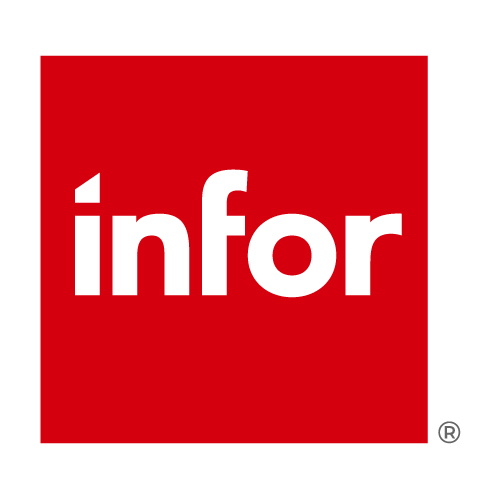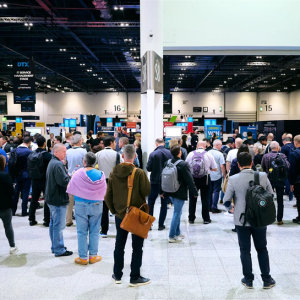
Logistics. Manufacturing. Retail. Whatever the brand, modern fashion would be impossible without specificity – a fierce sense that every link in the supply chain has a vital and specific role.
Nor is this particularly surprising. At a time when two-thirds of industry insiders believe improving speed to market is a key priority, and when the biggest brands have networks of suppliers spanning into the thousands, companies are constantly pushing to find efficiencies.

But though many fashion brands have developed robust supply chains in the physical world, encompassing everything from fields via factories to downtown retail stores, the same can’t always be said of their digital platforms, where they are relying instead on a mass of legacy servers and systems. (A 2021 report by McKinsey found that 71% of fashion companies lacked the technical tools they needed to develop and source products.)
That’s shadowed, moreover, by shifting customer expectations. With 95% of young Europeans now using the internet every day, brands must build systems that allow clients to test styles physically as well as digitally (the so-called “phygital” model). It goes without saying that none of this is easy, especially for the many brands that have fallen behind. Yet by relying on bespoke new platforms, supplied by industry experts, even the most analogue of brands can digitalise rapidly.
Digital innovations in fashion
In certain ways, the pressures on fashion brands to embrace specialised new technology are the same as they always were. That’s true, in general terms, thanks to their extensive supply chains – but also because the way clothes are made requires such intensive and persistent planning. Between anticipating changes in style and season, and manufacturing garments in a range of colours and sizes, Helene Behrenfeldt argues fashion sourcing is “more challenging” than across many other sectors.
As the fashion strategy director at ERP cloud software giant Infor continues, however, an even bigger difficulty involves the changing demands of the consumers themselves. “‘What does it look like? Can I see how this dress will look on my body?” Behrenfeldt says, paraphrasing the demands of young consumers. That’s shadowed, she adds, by a rising need for specific digital gadgets, not least around virtual avatars.
Behrenfeldt concedes that “young brands” are indeed embracing new technologies natively, but more established operators too often remain wedded to older legacy systems – unable to easily integrate specialised, customer-centric ideas.
And though the shock of Covid has prodded some traditional fashion houses towards change, the consequences of inaction remain clean. As a 2022 McKinsey report uncovered, brands that are slow to invest in digital technology could ultimately experience a relative drop in earnings of 23%. The advantages of new technology are equally obvious: as that same McKinsey study stressed, brands that bake AI into their business models could enjoy a 118% boost in cash flow by the end of the decade.
Focusing on the right solution
Cutting-edge innovations like virtual wardrobes – to say nothing of more humdrum efficiencies in areas like supply chain management – can only happen on solid foundations. Yet if generic ERPs are common enough across fashion, Behrenfeldt indicates that only specialised support can bring long-term prosperity. “A brand shouldn’t have to worry about technology as they did in the past,” is how the Infor executive puts it. “They should buy something that’s ready-made.”
That instinctively makes sense. In a high-pressure sector like fashion, it would take some effort for brands to move away from siloed legacy equipment and embrace the cloud – only to then waste time and money on shaping the technology for their businesses. “That’s the key purpose with an industry-specific solution,” Behrenfeldt emphasises. “Brands don’t have to develop it from scratch. As an agile industry, brands should focus on their business and how to meet the market needs – instead of on technology.”
Infor’s range of fashion-specific software solutions is the ideal companion for any company eager to ride the digital wave. Considering how quickly demands are shifting, this is perhaps most apparent in terms of customer service. Among other things, Infor’s ERP can help brands offer additional services around their products to extend the life cycle, and better support the circular fashion economy. This can substantially improve both business health, sales and consumer satisfaction leading to increased brand loyalty.
Other aspects of Infor’s offering are similarly tailored towards apparel. Mindful of the industry’s vast international scale, for instance, Behrenfeldt states that their platforms boast global localisation support – a fact that can naturally smooth the ground for mergers and acquisitions.
At the same time, Behrenfeldt is keen to highlight the ways in which ERPs can give better visibility on industry supply chains. Once again, specialisation is important here. Allowing brands to track the extended production chain and analyse multimode, multileg shipments, Infor’s system is ideal for globalised apparel brands.
The aim, at any rate, is to encourage what Behrenfeldt calls “extensibility” – systems that provide a rigorous degree of out-the-box service, but which can also be shaped to meet the unique needs of the company.
Whatever extras a brand opts for, adoption should always be straightforward. Fortunately, Infor CloudSuite Fashion excels here too. For one thing, software updates are automated, while downtime is kept to a minimum. For another, managers can preview new features before making them public, all without needing to invest in major upgrades.
No wonder Behrenfeldt and Infor are becoming such invaluable partners for a sector on the move.








